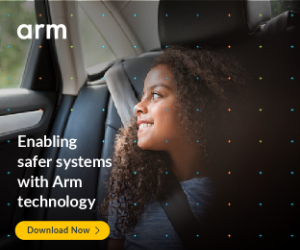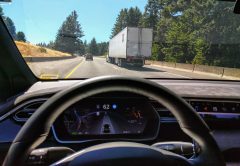Smart cities promise to deliver the most advanced transportation experience, bringing mobility into an era of connectivity and autonomy. The realities may not be quite as attractive, as smart cities will inevitably exist in places that can barely maintain their roads, let alone the infrastructure of tomorrow.
“It comes back to, how do we define smart city?” said Grady Irey, VP of Data Science at Arity, an insights technology company started by Allstate. “If we define that by some level of smart, integrated transportation system that’s optimized for throughput and safety and it’s the exact same in every city, then I don’t think that’s ever going to happen. But that’s not how I would define it.”
Irey said that if you look at the current climate, there are a number of programs that work differently from city to city. Each area adapts the solutions that work best for them. Irey sees a similar strategy for smart infrastructure – it will be tailored to each individual environment instead of offering one specific approach that all cities must follow.
“What might achieve the same objective in each of those cities may be a different sort of orchestra of treatments,” he said. “But the commonality in all of that, you need to have data, you’ve got to have good analytic processing power – good data science and data infrastructure, at least a partner that can help you with that to have clear objectives.”
Most important of all, Irey said smart city developers should not make their solutions dependent on hard infrastructural investments.
“We should be leveraging the things that are already in place today,” he added. “Mobile phones are a big part of that. Everybody is connected already. Everybody is carrying a live active beacon. And there’s all sorts of information that we can tell from that regardless of if somebody is in a car, a bike, walking, on a train, subway, etc. All that information plus the systems that govern all these sorts things for the transportation ecosystem can be brought together to work much more efficiently than it does today.”
Privacy is a concern, however. What happens if consumers turn off their shared location? Will the smart city be unable to function properly without access to data from all residents and visitors?
Not necessarily, but Irey does not expect the majority of consumers to turn off their location services. There may be some cases where a consumer has to share his or her location to receive the most benefits, but if they choose not to, the smart city will live on.
“What are we trying to accomplish by putting a sensor in every traffic light?” Irey questioned. “Once we start to answer that question, we can determine how much of that we can actually replace by just using cell phone data.”
Some may wonder if smartphones are truly that powerful, but consider this: mobile devices already provide a cornucopia of traffic data without using sensors placed within the infrastructure.
“People don’t realize that,” said Irey. “It’s not predominantly from sensors in the ground at interstates. That’s mostly mobile phone data, probe data, and there’s all sorts of different things we can do with that data. I’m not saying at all that we shouldn’t invest in hard infrastructure sensors, but I think if we’re waiting for all of that in order to realize some of the value we envision with smart city applications, I think that would be really foolish.”
About the author:
Louis Bedigian is an experienced journalist and contributor to various automotive trade publications. He is a dynamic writer, editor and communications specialist with expertise in the areas of journalism, promotional copy, PR, research and social networking.









